Dinner
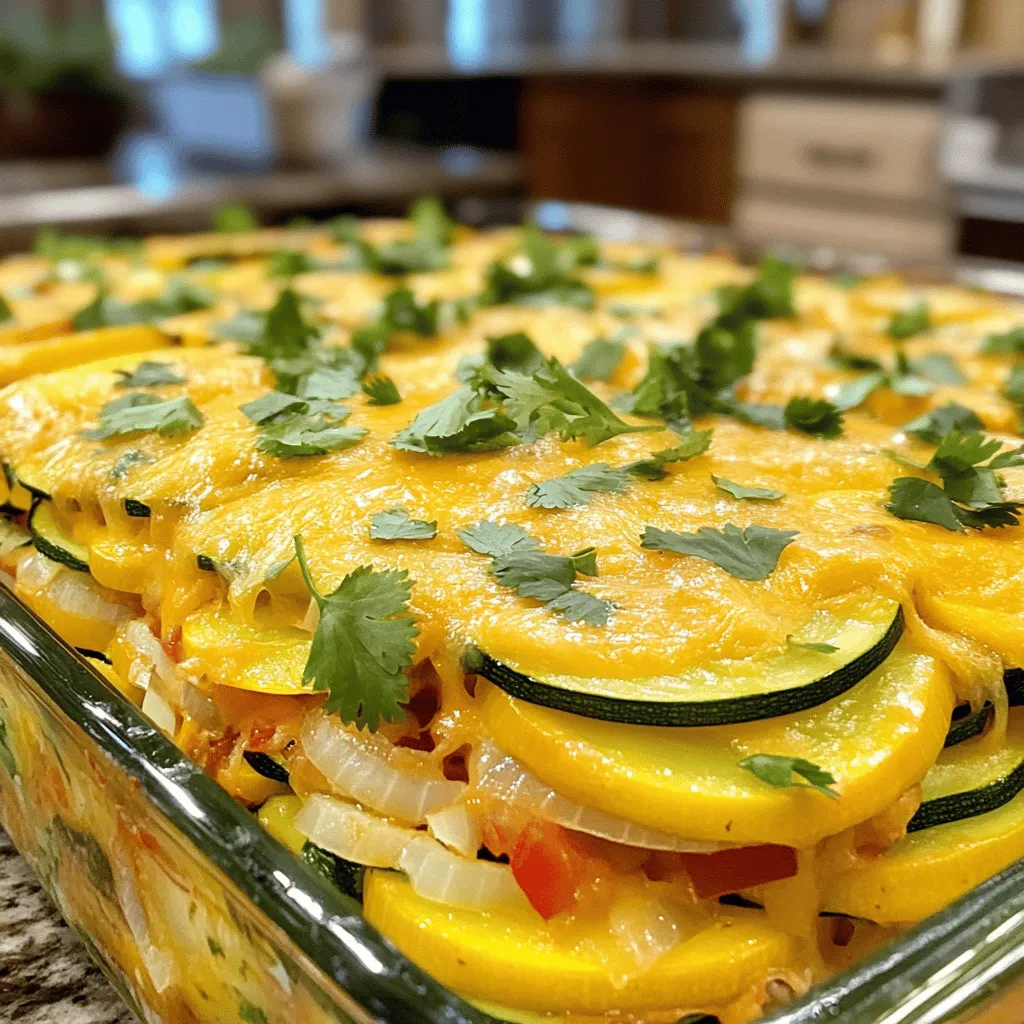
Tex-Mex Keto Squash Casserole Flavorful and Easy Meal
Are you looking for a dish that combines bold Tex-Mex flavors with a healthy twist? My Tex-Mex Keto Squash Casserole is your answer! This easy
![To make a tasty yellow squash casserole, you need simple ingredients. Here’s what you'll need: - 4 medium yellow squash, sliced - 1 medium onion, chopped - 2 cloves garlic, minced - 1 cup shredded cheddar cheese - 1 cup breadcrumbs - 1/2 cup sour cream - 2 tablespoons olive oil - 1 teaspoon dried thyme - 1/2 teaspoon salt - 1/4 teaspoon black pepper - 1/4 teaspoon cayenne pepper (optional for a kick) - Fresh parsley for garnish These items create a great base for your dish. The squash gives it a soft texture. The cheese adds creaminess, while the breadcrumbs give a nice crunch. You can easily customize your casserole. Here are some fun add-ins to consider: - Cooked bacon or sausage for a savory touch - Chopped bell peppers for a sweet crunch - Fresh herbs like basil or dill for added flavor - Corn for a touch of sweetness and color Feel free to mix and match these add-ins. They make the dish your own! Seasoning makes all the difference in a casserole. Here are my favorites: - Dried oregano adds a nice earthiness. - A pinch of red pepper flakes for some heat. - A little garlic powder for added depth. These seasonings enhance the taste of yellow squash. They help balance the flavors and create a delicious dish. For the full recipe, visit the section above. Happy cooking! First, gather all your ingredients. You will need four medium yellow squash, one medium onion, and two cloves of garlic. Slice the squash and chop the onion. Mince the garlic. This makes it easy to cook later. Use a large skillet for sautéing. Now, heat two tablespoons of olive oil in the skillet over medium heat. Add the chopped onion and sauté for about three to four minutes. Wait until the onion turns soft and clear. Next, add minced garlic and stir for one minute. This helps bring out the flavors. Then, add your sliced squash, one teaspoon of dried thyme, half a teaspoon of salt, and a pinch of black pepper. If you like spice, add a quarter teaspoon of cayenne pepper. Cook this mixture for five to seven minutes. The squash should become slightly tender but not mushy. In a mixing bowl, combine the sautéed squash mixture with half a cup of sour cream and half of the shredded cheddar cheese. Stir well to coat everything. Next, pour this mixture into your greased 9x13 inch casserole dish. Spread it evenly. Top with the remaining cheddar cheese. Then sprinkle a cup of breadcrumbs over the cheese. This adds a nice crunch. Bake your casserole in the preheated oven at 350°F for 25 to 30 minutes. Look for a golden top that is bubbly. Once finished, let it cool for a few minutes. Garnish with fresh parsley before serving. For the full recipe, check out the details above. Enjoy your dish! To get the best texture in your yellow squash casserole, start with fresh squash. Slice the squash evenly, about half an inch thick. This helps them cook at the same rate. Sauté the squash just until it softens slightly. Overcooking leads to mushy squash, which we want to avoid. Adding breadcrumbs on top gives a nice crunch. This contrast makes the dish more enjoyable. For more flavor, try adding fresh herbs like basil or oregano. You can also mix in cooked bacon for a smoky touch. If you like heat, add a pinch of cayenne pepper. Don’t forget to taste as you cook. Adjust the salt and pepper to your liking. This way, you'll create a dish that suits your palate perfectly. Avoid using too much liquid. If the squash releases water, it can make the casserole soggy. Also, skip pre-shredded cheese; it often has anti-caking agents that can affect melting. Finally, don’t rush the baking time. Let it brown nicely in the oven for the best flavor. Follow these tips to ensure your casserole turns out delicious every time. For the complete recipe, check the Full Recipe. {{image_2}} You can easily change the recipe to fit your taste. To keep it vegetarian, you can add more veggies. Try bell peppers, zucchini, or spinach. These add color and flavor. If you prefer meat, ground turkey or sausage works great. Cook the meat first and mix it in with the squash. This adds a hearty touch. If you need a dairy-free option, I have you covered. Swap the sour cream for a dairy-free yogurt or cashew cream. Use non-dairy cheese for a cheesy taste without the dairy. Coconut milk can also work well. Just adjust the amount to keep the right texture. You won't miss the dairy at all. Using seasonal ingredients can make your dish even better. In summer, try using fresh tomatoes or basil. In fall, add roasted pumpkin or butternut squash for a warm flavor. Fresh herbs like thyme or rosemary can also change the taste. These swaps keep your casserole exciting and fresh throughout the year. For the full recipe, you can check the [Full Recipe]. After enjoying your yellow squash casserole, let it cool down. Place any leftovers in an airtight container. Store them in the fridge. This keeps them fresh for up to three days. Make sure to seal the container well to avoid moisture loss. To reheat your casserole, preheat your oven to 350°F (175°C). Place your casserole in an oven-safe dish. Cover it with foil to keep it moist. Heat for about 20 minutes. You can also use a microwave. Just heat it in short bursts. Stir between each burst to warm it evenly. If you want to freeze the casserole, let it cool completely first. Use a freezer-safe container or wrap it tightly in plastic wrap. You can freeze it for up to three months. When you’re ready to eat, thaw it in the fridge overnight. Reheat it in the oven for the best texture. Using these storage tips, you can enjoy your cheesy yellow squash casserole anytime! For more details, check the Full Recipe. Yes, you can use other squash types. Zucchini works well and gives a nice flavor. Butternut squash adds sweetness too. Just slice them thin, so they cook evenly. Mixing different squash can add color and taste to your dish. The casserole lasts about three to five days in the fridge. Make sure to cover it well. This keeps it fresh and prevents it from drying out. When you're ready to eat, just reheat it in the oven or microwave. You can serve this casserole with many dishes. A simple green salad pairs nicely. Grilled chicken or fish adds protein and rounds out the meal. You could also serve it with crusty bread for a comforting touch. To make it gluten-free, swap regular breadcrumbs for gluten-free ones. You can also use crushed gluten-free crackers or oats. These options keep the texture while making it safe for those with gluten sensitivities. Yes, you can prepare the casserole the night before. Just follow the steps and cover it tightly. Store it in the fridge overnight. When you're ready, bake it the next day. It will save you time and let the flavors blend. For the full recipe, check out the details above. Yellow squash casserole is a simple, tasty dish. I covered key ingredients, optional add-ins, and seasonings. You learned how to prep, cook, and assemble the casserole step by step. I shared tips for the best texture and flavor. Variations let you customize for different diets or seasons. I also explained how to store leftovers and answered common questions. In the end, yellow squash casserole is flexible and easy to make. Enjoy experimenting with your own twist on this classic dish!](https://toastedrecipes.com/wp-content/uploads/2025/07/9357c2c5-426f-4a48-8095-e8c49cdb5377.webp)
Yellow Squash Casserole Easy and Delicious Recipe
Are you ready to dive into a dish that combines ease and flavor? My Yellow Squash Casserole is simple to make and full of taste.
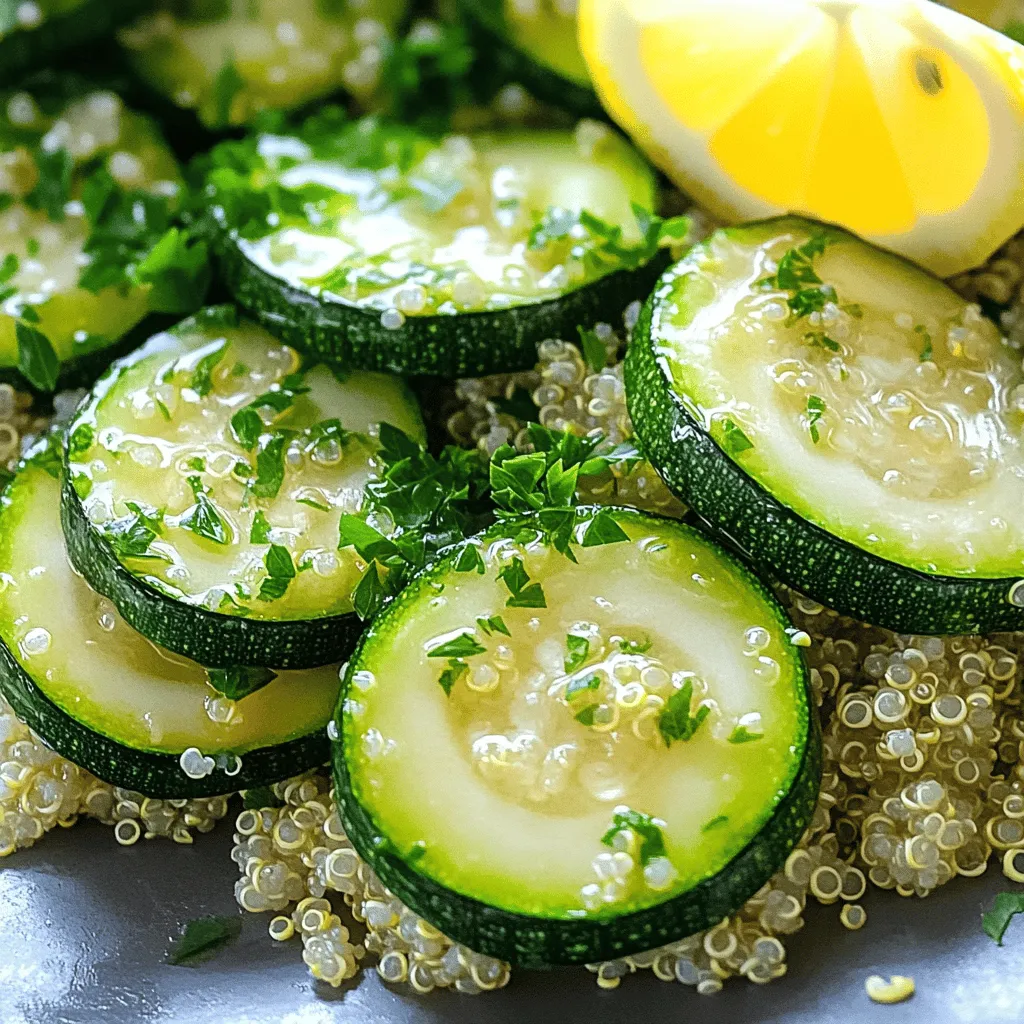
Sauteed Zucchini Flavorful and Simple Cooking Guide
Welcome to your ultimate guide for sautéed zucchini! This simple dish is packed with flavor and can brighten up any meal. I’ll walk you through
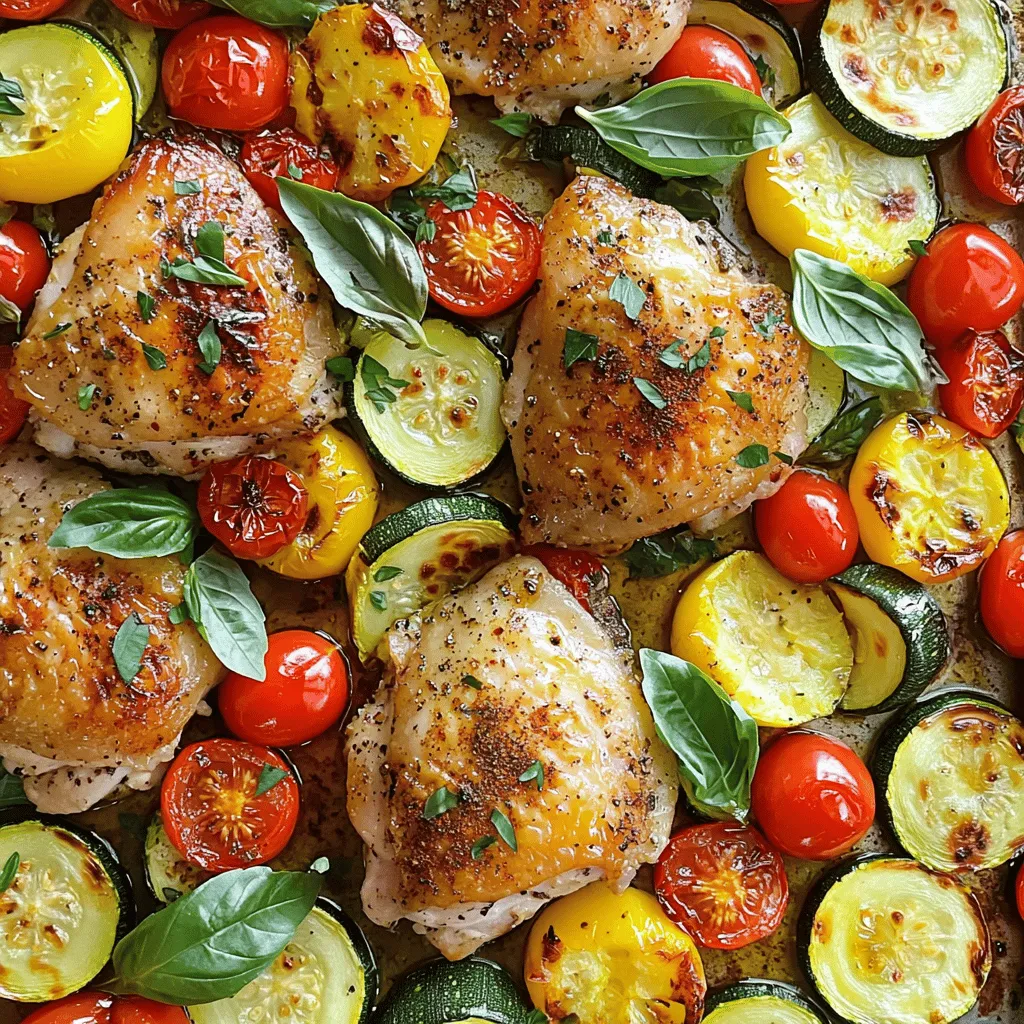
Mediterranean Chicken & Zucchini Sheet Pan Delight
Ready to savor the sun-soaked flavors of the Mediterranean? This Mediterranean Chicken & Zucchini Sheet Pan Delight is an easy, tasty meal you can whip
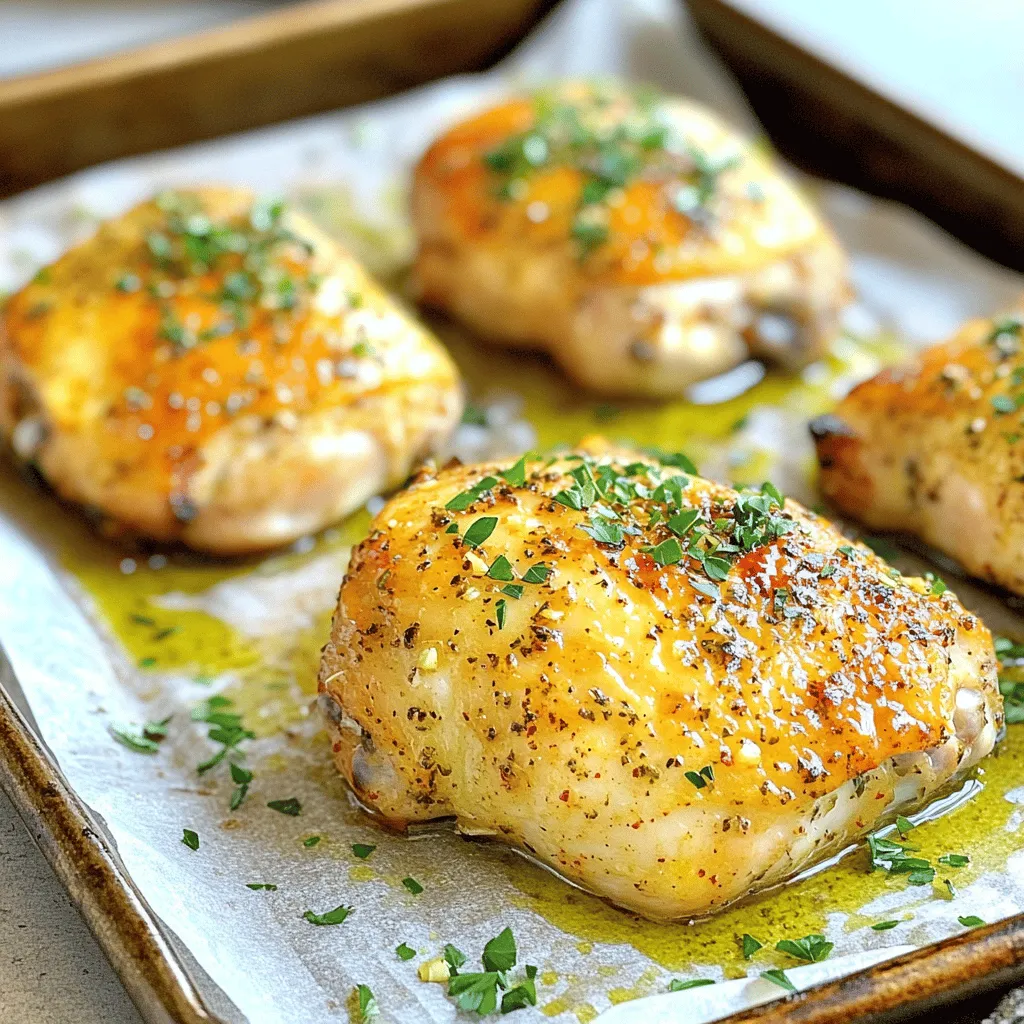
Juicy Oven Baked Chicken Breast Tender and Tasty Recipe
If you crave a simple yet delectable dish, look no further! My Juicy Oven Baked Chicken Breast recipe delivers tender, flavorful chicken that’s perfect for
![- 4 medium zucchini, spiralized - 1 tablespoon sesame oil - 1 red bell pepper, thinly sliced - 1 carrot, julienned - 1 cup snap peas, trimmed - 3 green onions, sliced - 1/4 cup creamy peanut butter - 2 tablespoons soy sauce (or tamari for gluten-free) - 1 tablespoon lime juice - 1 tablespoon sriracha sauce (adjust to taste) - 1 teaspoon garlic, minced - 1 teaspoon ginger, grated - Fresh cilantro, for garnish - Chopped peanuts, for garnish - Bell peppers of different colors - Other vegetables like broccoli or mushrooms - Chicken, shrimp, or tofu for protein I love using fresh ingredients for my Thai zucchini noodles. Zucchini is a great base because it adds fiber and keeps the dish light. Spiralizing zucchini makes it fun and easy to eat. You can use a simple spiralizer, or even a peeler, to create thin noodles. The sesame oil brings a nice flavor and aroma. I always pick fresh bell peppers and carrots for crunch. Snap peas add sweetness and a pop of color. For a creamy sauce, peanut butter is key. It makes everything rich and satisfying. Soy sauce adds saltiness, while lime juice gives a fresh kick. Sriracha sauce adds heat, so adjust it to your taste. Garlic and ginger enhance the dish's flavor profile, rounding out the taste. Lastly, cilantro and peanuts make great toppings for a nice finish. Feel free to customize your dish with optional add-ins. You can mix in different bell pepper colors for a vibrant look. Other veggies like broccoli or mushrooms also work well. If you want protein, try chicken, shrimp, or tofu. For the full recipe, check out the instructions to create this delightful meal! - Prepare the Zucchini: Use a spiralizer to create zucchini noodles. Place them in a bowl and sprinkle with salt. Let them sit for 15 minutes to remove excess moisture. After that, pat them dry with paper towels. - Heat the Oil: In a large skillet or wok, heat 1 tablespoon of sesame oil over medium heat. - Cook the Vegetables: Add 1 red bell pepper, sliced thin, 1 julienned carrot, and 1 cup of trimmed snap peas to the skillet. Stir-fry for about 3-4 minutes. You want the veggies soft but still crunchy. - Create the Sauce: In a bowl, whisk together 1/4 cup of creamy peanut butter, 2 tablespoons of soy sauce, 1 tablespoon of lime juice, 1 tablespoon of sriracha, 1 teaspoon of minced garlic, and 1 teaspoon of grated ginger. Mix until smooth. - Combine Ingredients: Add the zucchini noodles to the skillet with the stir-fried vegetables. Pour the peanut sauce over everything. Toss gently for 2-3 minutes until the noodles warm up a bit. - Season and Serve: Taste the dish and add salt and pepper if needed. Remove from heat and garnish with 3 sliced green onions, fresh cilantro, and chopped peanuts. For the full recipe, check out the Spicy Thai Zucchini Noodles section. Enjoy your meal! To make perfect zucchini noodles, you need the right tools. A spiralizer works best for creating thin, even noodles. You can also use a vegetable peeler for broader strips. Just remember to press gently. When stir-frying, keep the heat at medium. This helps the veggies cook evenly without burning. Stir often to keep things moving in the pan. You want them crisp, not mushy! Adjust the heat of your dish by changing the sriracha amount. If you like it spicy, add more. If you prefer mild, reduce it. Taste as you go for the best results. Fresh herbs like basil or cilantro can boost flavor. Just chop them and mix them in right before serving. They add freshness and aroma to your dish. To plate your Thai zucchini noodles beautifully, start with a large, shallow bowl. Twirl the noodles in the center and create height. This makes the dish look fancy. Using colorful garnishes is key. Add sliced green onions and chopped peanuts on top. A sprinkle of cilantro adds bright color and flavor. It makes your meal inviting and appealing. For the full recipe, check out the detailed instructions. {{image_2}} You can easily make this dish vegan. Simply use maple syrup or agave instead of honey in the sauce. For gluten-free options, choose tamari instead of soy sauce. This keeps the flavors rich without gluten. Want a punch of citrus? Add some lime zest to your dish. This will brighten the flavors. You can also try different nut butters. Almond or cashew butter can change the taste nicely. Try a Thai curry version for a new twist. Add coconut milk and curry paste to the sauce. For an Italian flair, mix in garlic and Parmesan cheese. This changes the dish but keeps it delicious. To keep your Thai zucchini noodles fresh, follow these tips: - Cool Down: Let the noodles cool before storing. - Use Airtight Containers: Place leftovers in airtight containers to lock in moisture. - Refrigerate: Store in the fridge and eat within 3-4 days for best taste. To reheat your noodles without making them soggy, try this: - Microwave: Heat on medium power for 1-2 minutes, stirring halfway through. - Stovetop: Warm in a skillet over low heat for about 5 minutes. Add a splash of water if needed. You can freeze zucchini noodles, but keep these points in mind: - Blanch First: Briefly boil the noodles for 1-2 minutes, then chill in ice water. - Use Freezer Bags: Place in freezer bags, removing as much air as possible. - Thaw and Cook: To use, thaw in the fridge overnight and sauté in a skillet until warm. For the full recipe of spicy Thai zucchini noodles, check out the [Full Recipe]. How to make zucchini noodles without a spiralizer? You can use a vegetable peeler or a box grater. Slice the zucchini into thin strips with the peeler. For the box grater, use the larger holes to create noodle-like strands. Both methods work well and give you a fun texture. Can I prep Thai zucchini noodles ahead of time? Yes, you can prepare the zucchini noodles a few hours in advance. Store them in an airtight container in the fridge. To keep them fresh, sprinkle a bit of salt on them. This helps draw out moisture and keeps them crisp. What are the best sides to serve with Thai zucchini noodles? Thai zucchini noodles pair well with many sides. Try serving them with spring rolls or a light salad. You can also add grilled chicken, shrimp, or tofu for protein. These options enhance the meal and add more flavor. Caloric content for one serving One serving of Thai zucchini noodles has about 220 calories. This includes the veggies and sauce. It’s a light yet filling dish, making it a great choice for a healthy meal. Benefits of using zucchini instead of traditional noodles Zucchini noodles are low in carbs and calories. They are high in vitamins and minerals. Using zucchini helps you eat more veggies and feel full without the extra calories. It's a smart choice for anyone seeking a healthier meal. Can I use other vegetables instead of zucchini? Yes, you can use other vegetables. Try carrots, sweet potatoes, or butternut squash. Each will bring its own taste and texture. Just spiralize or julienne them like zucchini. Alternatives for peanut butter in the sauce? If you need an alternative, try almond butter or sunflower seed butter. Both options work well in the sauce. They provide a similar creaminess and flavor that pairs nicely with the dish. In this blog post, we explored a tasty recipe for Thai zucchini noodles. We began with the key ingredients that make the dish shine. Then, we walked through the preparation, cooking, and final assembly. I shared tips for cooking techniques, flavor enhancements, and presentation suggestions. Always feel free to customize your noodles to suit your taste. Enjoy experimenting with different ingredients and methods. This dish is simple, flavorful, and healthy. Start enjoying these Thai zucchini noodles today!](https://toastedrecipes.com/wp-content/uploads/2025/07/b447b108-e067-42cf-ae19-86de0af6a080.webp)
Thai Zucchini Noodles Fresh and Healthy Recipe Guide
Ready for a fresh and healthy meal that’s packed with flavor? This guide to Thai Zucchini Noodles will show you how to use spiralized zucchini
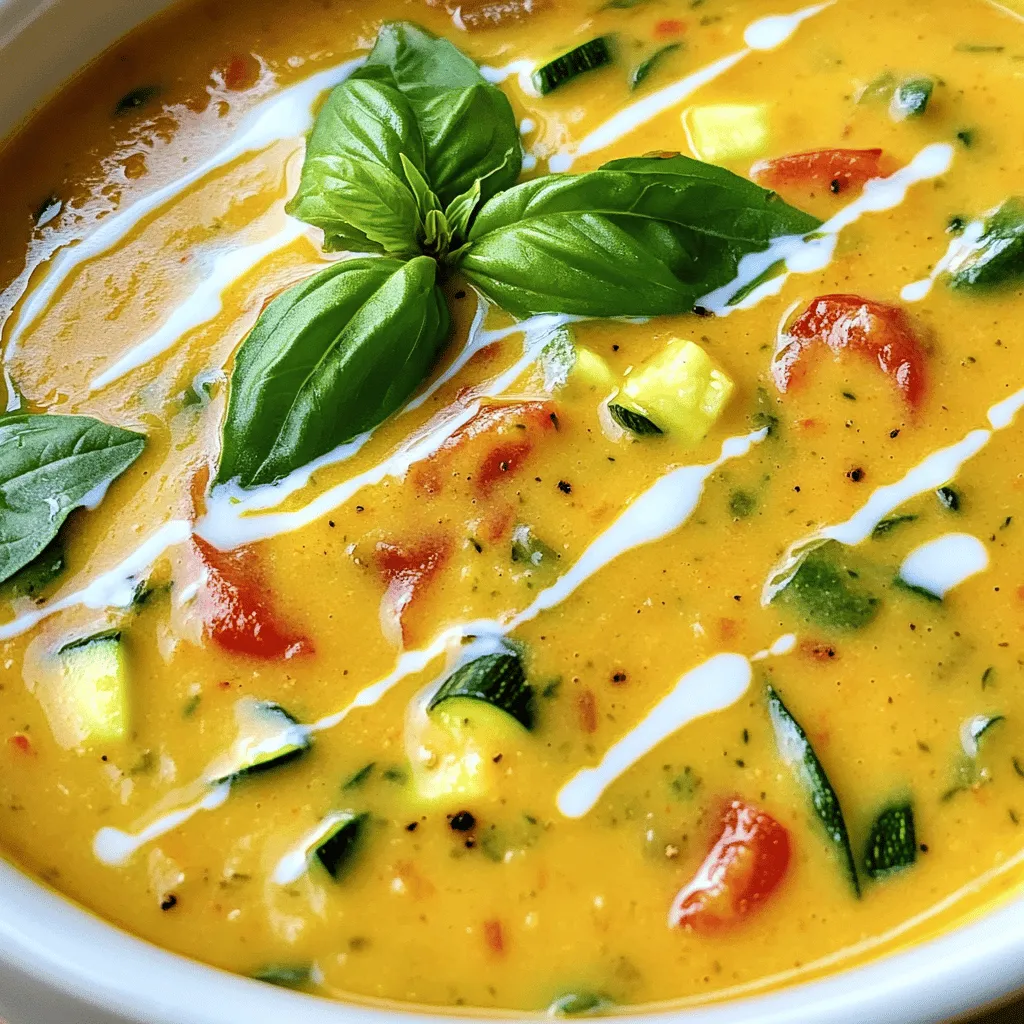
Zucchini Tomato Soup Flavorful and Quick Recipe
Looking for a delicious and quick meal? My Zucchini Tomato Soup is perfect! With fresh veggies like zucchini and juicy tomatoes, this recipe is full

Zucchini Cornbread Casserole Comforting and Simple Dish
Are you ready to try an easy and tasty dish? My Zucchini Cornbread Casserole is packed with flavor and comfort in every bite. This simple
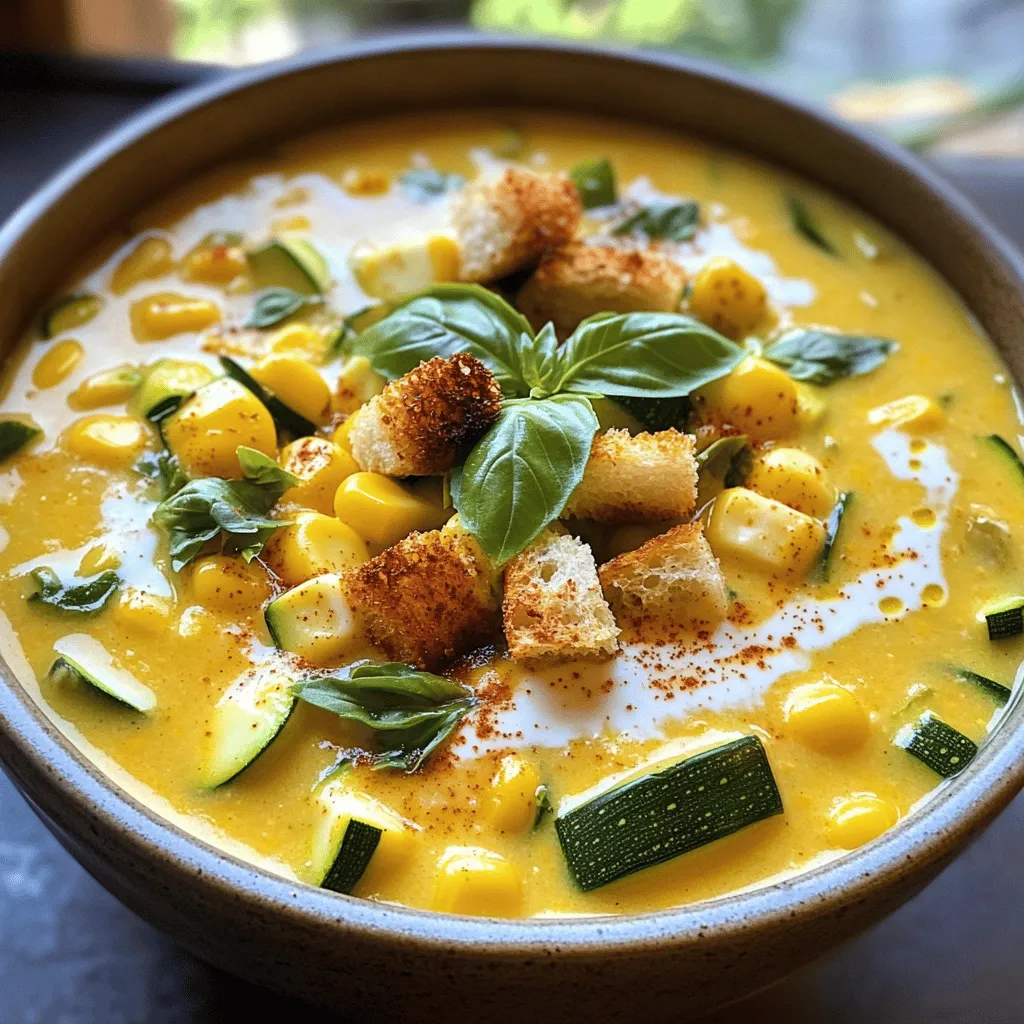
Savory Summer Corn and Zucchini Chowder Recipe
Summer is the perfect time for fresh flavors, and nothing says summer like a warm bowl of chowder. In this recipe, I’ll show you how
![To make Easy Cheesy Zucchini Casserole, you need fresh and tasty ingredients. Here’s what you will need: - 4 medium zucchinis, sliced thin - 1 cup grated cheddar cheese - 1 cup shredded mozzarella cheese - 1 cup ricotta cheese - 1/2 cup grated Parmesan cheese - 1/2 cup breadcrumbs (preferably whole wheat) - 3 cloves garlic, minced - 1 teaspoon Italian seasoning - Salt and pepper to taste - 2 tablespoons olive oil - Fresh basil for garnish Each ingredient plays a key role in making this dish rich and creamy. The zucchinis add a fresh crunch, while the cheeses bring a smooth and cheesy flavor. You can mix and match the types of cheese to suit your taste. The garlic and Italian seasoning give it a wonderful aroma and depth of flavor. Using whole wheat breadcrumbs adds a bit of texture and makes it a bit healthier. Fresh basil at the end not only makes it look pretty but also adds a burst of freshness. For the full recipe, check out Easy Cheesy Zucchini Casserole. - Preheating the oven: Start by setting your oven to 350°F (175°C). This step is key for even cooking. - Preparing zucchini mixture: Take 4 medium zucchinis and slice them thin. In a large bowl, mix the zucchini with 3 minced garlic cloves, 2 tablespoons of olive oil, Italian seasoning, salt, and pepper. Toss well so the zucchini gets coated. - Mixing the cheese: In another bowl, blend 1 cup of ricotta cheese with half of the grated Parmesan cheese. Add a pinch of salt and pepper. Stir until smooth. - Initial layer with zucchini: Grease a 9x13 inch baking dish. Spread half of the zucchini mixture on the bottom. - Adding cheese mixture: Next, add half of the ricotta mixture over the zucchini layer. Make sure to spread it evenly. - Completing the layers: Sprinkle half of the cheddar and mozzarella cheeses on top. Repeat these layers with the remaining zucchini, ricotta, and finish with the leftover cheddar and mozzarella. - Baking time and temperature: Bake your casserole in the oven for 30-35 minutes. Look for a golden, bubbly top. - Cooling and serving steps: After baking, take it out and let it cool for a bit. This helps with serving. Garnish with fresh basil leaves for a nice touch. For the full recipe, check the details above. Enjoy your tasty meal! To boost the taste of your Easy Cheesy Zucchini Casserole, consider these tips: - Recommended seasonings: Use garlic, Italian seasoning, salt, and pepper to add depth. - Cheese substitutions: Swap cheddar for gouda or use feta for a tangy twist. Cutting zucchini correctly helps with even cooking: - How to cut zucchini properly: Slice zucchinis thinly, about 1/4 inch thick. This helps them cook through and blend well with the cheese. - Achieving the perfect bake: Bake at 350°F for 30-35 minutes. Look for a golden, bubbly top to ensure it's cooked right. Pair your casserole with some great sides: - Ideal pairings with the casserole: Serve with a fresh salad or crusty bread. These balance the richness of the dish. - Presentation ideas: Garnish with fresh basil leaves for a pop of color and flavor. A drizzle of olive oil can also enhance its look. For the full recipe, check the details above. Enjoy your cooking! {{image_2}} You can make this dish even heartier by adding proteins. Ground meats like turkey or beef work well. Just brown them in a pan before mixing them in. If you prefer vegetarian options, try lentils or chickpeas. Both add protein and keep it healthy. Feel free to mix in other veggies. Bell peppers, mushrooms, or spinach all taste great. In summer, use fresh corn or tomatoes for a seasonal twist. You can even add some sweet potatoes for a sweeter flavor. While this recipe calls for cheddar and mozzarella, you can switch up the cheeses. Try gouda for a smoky taste or feta for a tangy kick. You can also use dairy-free cheese if you want a gluten-free option. Just make sure it melts well for the best results. For the full recipe, check out the [Full Recipe]. To keep your Easy Cheesy Zucchini Casserole fresh, store leftovers properly. First, let the casserole cool to room temperature. Then, cut it into servings. Use an airtight container for storage. This helps keep moisture in and prevents it from drying out. You can also use glass containers with lids for easy stacking in the fridge. When it's time to enjoy your leftovers, reheating is simple. Preheat your oven to 350°F (175°C). Place a portion on a baking dish. Cover it with foil to keep it moist. Heat for about 15-20 minutes, or until warm. If you prefer the microwave, use a microwave-safe dish. Heat on medium power for about 2-3 minutes, checking it halfway through. You can freeze the casserole too! To freeze, let it cool completely. Then, wrap it tightly in plastic wrap and aluminum foil. This helps prevent freezer burn. You can also use a freezer-safe container. When you're ready to eat, thaw it overnight in the fridge. Then, reheat it in the oven. Enjoy your Easy Cheesy Zucchini Casserole anytime with these storage tips! It takes about 15 minutes to prep. Then, you need to bake it for 30-35 minutes. In total, you will spend around 50 minutes on this dish. You can serve it warm right after it cools for a bit. Yes, you can. Prepare the casserole up to the baking step. Cover it with plastic wrap or aluminum foil. Store it in the fridge for up to 24 hours. When ready, just bake it straight from the fridge. You may need to add a few extra minutes to the baking time. This casserole pairs well with simple sides. Consider serving it with: - A fresh garden salad - Garlic bread - Steamed green beans - Roasted carrots These sides add color and flavor, making your meal even more enjoyable. For the full recipe, check out the Easy Cheesy Zucchini Casserole. This blog post showed you how to make a tasty Easy Cheesy Zucchini Casserole. We covered all the key ingredients, from zucchini to various cheeses. I shared step-by-step instructions to help you through the cooking process. You learned tips for flavor, cooking techniques, and how to store leftovers. Finally, we explored variations to fit your taste. Enjoy this dish and make it your own by experimenting. The options are endless, so get cooking!](https://toastedrecipes.com/wp-content/uploads/2025/06/92c51344-d88c-440f-843f-752ba0577604.webp)
Easy Cheesy Zucchini Casserole Quick and Tasty Dish
Craving a delicious and simple dish? The Easy Cheesy Zucchini Casserole is here to satisfy! This tasty recipe combines fresh zucchini with a blend of